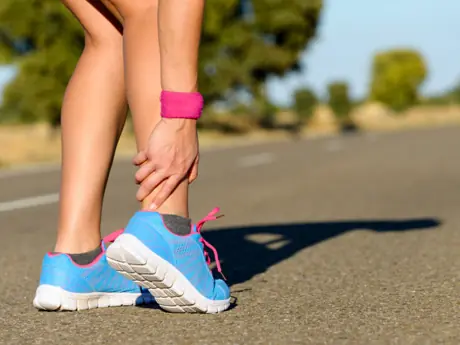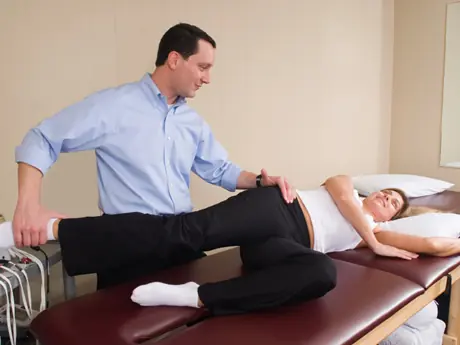Hamilton also suggests doing strength work that focuses on the gluteus medius and lateral torso muscles in order for the entire kinetic chain to function optimally. This could include exercises like bridges, side leg lifts and planks. Research has also shown that female runners with small calf circumference—read weaker calf muscles—have weaker tibias, so it's also worth also including heel raises and toe walks to strengthen the calf muscles.
More: How to Strengthen Your Calves and Achilles
Additionally, other research has suggested that taping and orthotics can help to lessen overpronation, and reduce pain associated with shin splints. While further research showed that an over-the-counter orthotic can be just as useful as a custom-made rendition, be sure to consult with your doctor regarding what brand to try.
Icing and anti-inflammatories are also commonly suggested to runners experiencing this type of issue to reduce inflammation in the lower legs and allow the surrounding tissues time to heal. If you take these measures, be sure you use them to solve the problem, not mask the pain so you can continue running.
More: 5 Ways Runners Get Recovery Wrong
How to Make Training Modifications
If you are experiencing a mild case of shin splints, strength work and icing can often address the problem, along with a scant amount of time off from running. Hamilton emphasizes that you're better off being benched for a few days, rather than letting the problem worsen.
More: Why You Need to Take Breaks From Running
"If you wallow in the river of denial for a while before admitting you are injured, once [shin splints] become chronic, it can take weeks or months to resolve," Hamilton says.
To be sure, this is the type of injury that can be a minor hiccup in training or a season-ending ailment.
"The moral of the story is: Do not ignore symptoms from your body," says Hamilton. "Catch it early, take appropriate action immediately, rest, do some gentle restorative exercise, deal with the factors you can identify, and hopefully, if you've caught it early enough, and you're careful coming back to training, you'll be back on a healthy path in no time."
More: How Quickly Do You Lose Running Fitness?
Shin Splint Prevention
When it comes to avoiding shin splints in the first place, many of the same strengthening exercises are recommended for treatment and prevention. Hamilton suggests doing a hip- and core-strengthening program three times a week, as well as working on calf and hamstring flexibility. When putting in 20 minutes of extra work a few times each week can mean the difference between running healthy and being injured, it's well worth prioritizing. What's more, hip and core strength can help you avoid a whole host of other injuries as well, which means fewer days off and more healthy running miles accumulated.
More: Spice Up Your Core Workouts With These Plank Variations
It's also important to execute training strategically to avoid overloading your bones and muscles, which can prompt pain related to shin splints. By training smart, increasing your mileage and intensity sensibly, and replacing your shoes regularly, many runners will find that they can skirt shin splints altogether. For those who do everything right and are simply more susceptible, some simple strength and flexibility work can make all the difference.
More: 5 Exercises to Strengthen Your Shins, Achilles, Feet and Calves
 Sign up for your next race.
Sign up for your next race.- 2
- of
- 2
About the Author

Get ACTIVE on the Go


Couch to 5K®
The best way to get new runners off the couch and across the finish line of their first 5K.
Available for iOS | Android







Discuss This Article